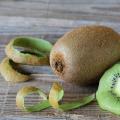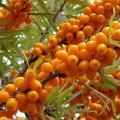The company "My Fur" is pleased to offer for its client not only a range of fur products, but also we carry out purchase and sale of fur raw materials on favorable terms.
The popularity of products made from natural fur is not surprising, many beauties consider fur products to be the main decoration in the winter. A natural fur coat is not only warm even in the most severe cold weather, but also a luxurious wardrobe item. For the production of high-quality fur coats and fur products, raw materials that meet the highest requirements are required, so our company purchases high-quality furs.
We strive to expand the volume of purchases and are looking for suppliers for long-term and reliable cooperation. We will be happy to buy fur skins different types and colors for our production. Focusing on the production of fur coats from Russian raw materials, we try to support local manufacturers.
Types of skins
Our company works with several types of furs, making products from both wild and domestic animals grown on specialized farms. Furs can be divided into several categories:
- Firstly, this is a winter and spring variety, that is, the skins of animals that fall or do not fall into hibernation, on which many parameters of fur raw materials will depend.
- Secondly, this is, of course, the division by variety. We make fur products from the skins of arctic fox and marten, raccoon, mink, beaver and otter, fox, lynx, and astrakhan fur.
In the range of our finished products there are fur products both from imported fur, and work is underway to expand the production of products from Russian fur from local suppliers. Work with manufacturers is carried out throughout Russia - we buy fur raw materials from private industries with delivery in all regions.
What fur raw materials do we buy: the advantages of varieties
The most sought after are arctic foxes and martens, these furry animals are widely bred in Russia, and their fur is very popular.
Mink products are also highly valued in the fur market, as this fur is considered one of the most noble varieties. We are looking for a partner to drink mink skins.
Among the rarer ones, furs of a wild cat can be distinguished - lynx and fox skins, which differ in their color and density, and due to the fact that these animals are much less often bred on farms for the production of fur, this raw material is valued higher.
We work with the skins of beavers and otters, this fur is particularly wear-resistant, durable, and due to the density of the low pile, it is quite warm.
Our company is ready buy sable skins at a bargain price, as this luxurious fur is rightfully considered one of the most beautiful and valuable. Our product range includes a wide range of products from this noble fur.
Raccoon fur is most often used to decorate and decorate individual elements, for example, a puffy and voluminous collar. We purchase raccoon skins and fur for finishing our products.
We also offer our customers a line of karakul fur, this fur is distinguished by neat curls and is very popular. We produce purchases doodle from Russian manufacturers.
Requirements for the quality of raw materials
Among the main criteria for high-quality raw materials, one can single out the density of the fur, the elasticity of the pile, the external shine, as well as the general condition and uniformity of color. The parameters of density and thermal insulation properties, the size of the dressing will also be very important.
We carry out a comprehensive assessment of the raw materials received, since it is impossible to make beautiful and high-quality fur coats from damaged and peeling skins. Often, the final quality of skins and fur raw materials will directly depend on the conditions of keeping on farms. The product is evaluated both from the point of view of operational properties - density, uniformity of the pile, thermal properties of the future fur product, and from the point of view of aesthetic - appearance and color.
We cooperate both with small private farms and hunting associations, as well as with large manufacturers, purchasing both natural-colored wild animal fur and dressing with already dyed fur. Company "My fur" is ready buy fur skins both in large batches on an ongoing basis, and carries out fur purchases in small batches.
Before you bring it to us for dressing, remove FAT and MEAT from the skins, and then salt the skin with 2 packages of fine salt and put it NOT in a plastic bag. Then your skins will be perfect!
Fur is obtained in different ways: hunting, breeding, buying, etc. However, in order for these skins to be able to realize your ideas, they need to be dressed. Our factory provides dressing services. We have been serving both individuals and taxidermy studios for 40 years. The quality of our skins allows us to create from them not only taxidermy products, but also perfectly suitable for tailoring. With the help of German technology of dressing and chemistry, your fur will last more than one year. We care about the quality of our products.
For those who get their fur through hunting, we advise you to take a look at the "Tips" section. Remember, the quality of the skins depends not only on us, but also on you!
Skins are accepted for dressing in wet-salted, fresh-salted and dry form.
The cost of dressing hides and furs
Changes have been made to dressing prices:
- 1st column - for fresh-dry and damp-salted skins, defatted according to GOST;
- 2nd column - for skins with fat, meat, bones, cartilage, without salt or frozen;
This measure was introduced due to the fact that the brought raw materials are not processed properly, which increases the dressing process, time and chemistry.
Factory dressing and processing
Mankind has always hunted. From the very moment the first weapon appeared, the first trophies appeared. Ancient people hunted not only for food, animal skins perfectly protected the body from the cold. How skins were processed in primitive times, and what tools of production were used for this, is an interesting question. But let's leave it for historians, and let's talk about modern technologies for dressing skins.
The modern factory "Lynx" invites everyone who is not indifferent to natural fur to cooperation. Our diversified enterprise specializes in working with the fur of fur animals. The cost of dressing fur in our factory is available to everyone who is interested in this service. The high quality of work is ensured by the presence of the following characteristics in the arsenal of our company:
- Proven and reliable fur processing equipment;
- Well-established technologies for dressing skins, which allow to preserve the quality characteristics of the skin and fur as much as possible;
- Many years of experience in our masters in the dressing and processing of fur and skins;
- Well-coordinated team of professionals of different specializations.
Their further fate depends on the quality of dressing skins. Only elastic, soft and light skins will become a source of inspiration for designers. It is they who are shown by the world's leading podiums and the most famous women proudly throw them over their shoulders.
Trophies in the modern world
Hunting for men is not only entertainment and an opportunity to escape from the gray everyday life. Hunting is an opportunity to return home as an earner, with a real trophy. The fur-bearing animal is one of the prey that you can be proud of. A properly dressed skin, whether it be a red fox or a fluffy raccoon, can also be a great gift. Products decorated with natural fur are always beautiful, stylish, elegant and warm, which is important for our climate zone. Regardless of fashion trends, at all times the cold is the main incentive for hunting fur-bearing animals and breeding them on an industrial scale.
Factory "Lynx" has enough capacity to provide skinning services on an industrial scale. To maintain high quality standards and comply with modern requirements, the Rys fur factory uses special technological processes, the observance of which is not permissible in domestic conditions, both in terms of human safety and the environment. Poisoning and injury are possible, while the quality of the dressing will still not respond.
It is important to understand that artisanal fur raw materials cannot meet modern quality and safety standards for manufactured products, and their service life is significantly lower than that of fur tanned under industrial conditions.
What makes up the price?
The cost of dressing skins in Malakhovka at the Lynx fur factory, it mainly depends on how competently the customer approached the issue of preserving the skins, whether he processed them correctly initially and how much he kept before bringing them to the factory for dressing, so the price is affected by the type of fur raw materials.
It is recommended to carry out salting with natural fine salt (a couple of packs per skin), after removing fat and meat from them. It is recommended to store the skins without cellophane until delivery to the factory. The use of a plastic bag significantly reduces the quality of the skin after dressing.
The difference in the cost of incorrectly preserved skins can be up to 50% of the cost of correctly preserved fur raw materials.
Factory "Lynx" carries out dressing of skins in Moscow and the Moscow region quickly and with a guarantee of results. Finished skins can be used for various purposes.
The quality of processing of leather and animal skins is largely determined by a competent approach to conservation. It is recommended to deliver the skins to the factory in wet-salted, fresh-salted and dry form.
If you live in Zheleznodorozhny, it will take you only half an hour to get to our factory by car and use our professional services.
Among other things, in our factory you can order the following services:
- tailoring fur products according to individual design;
- taxidermy;
- for dyeing and shearing skins.
The skins of sheep and cattle are applicable in many household chores. For a long time, used by our ancestors, and to this day they have not lost their relevance. Therefore, the idea of a small business in the processing of skins will not be extremely difficult to reproduce, especially if people from auls take up this business.
general information. A fresh skin is called a pair. For a tanner, there is no better skin than a steam room, especially if it is not stained with blood and dirt. But it is rarely possible to immediately send the skin to the factory or dress it yourself. And when lying, the steam skin quickly deteriorates. At first she shrinks, frowns, becomes horny. Then she starts to sing. Her hair is falling off. In the end, she completely rots. Therefore, something has to be done so that the skin is preserved without damage.
Skin processing.
After cleaning, the skin is rubbed with a mixture of equal parts of table salt and alum, finely ground. This mixture is used not only so that the undressed skin does not rot, but also to fix the hair.
The peeled skin must be salted as follows: salt is taken fine. For each skin, it is taken in winter from 200 g per 1 kg of skin weight and up to 300 g in summer. For a large bull skin, you will have to take 5.7-6.6 kg of salt in winter, and 8.2-10.2 kg of salt in summer; 3.3-5 kg will go on a cowhide in winter, and 5-6.2 kg in summer.
Processing mechanism. The skin is placed on a clean place in the spread, with wool on the ground or on the floor. It is good to put some kind of lining under the skin so that sputum can drain from it. The whole skin is evenly sprinkled with salt from the inside; it is useful to grind the salt with your hand so that it sticks well to the skin. If the skin is properly salted, then after three days it will show solid salt. If all its salt has been absorbed, then it is necessary to add fresh salt. When the whole skin is evenly salted, the head and part of the skin at the tail are bent inward, as well as the floors at the edges. Then salt is sprinkled on the head and all the thick parts along the wool.
Now fold the whole skin into a bundle. You have to fold according to the rules. First, the fourth part of the skin is folded inwards, starting from the head, then the right and left floors are folded to the middle, then the whole skin is folded along the ridge, then rolled up, starting from the head, into a bundle, and tied with a tail or twine.
Five days later, the bundle is disassembled. The sputum is allowed to drain, lightly salted and rolled up again, as for the first time. If everything is done according to the rules, then the skin will lie for a long time and will not rot.
When a lot of skins are collected, they can be salted in riots or stacks.
The first skin is salted on the floor in spreading, as has just been described. Then the whole skin is bent around so that the head, legs and floors lie inside, and the whole skin around becomes like a saucer. All bent parts are sprinkled with salt over the wool, the head is especially carefully added. Then they put the second skin so that the head does not fall on the head of the first skin, but next to it. Everything is done as with the first skin. The third, fourth, fifth and so on are placed on the second in the same way, each time salting everything well. Heads will lie in a circle one after another. Up to 200 skins can be stacked into such a riot. The brine in the riot should not flow to one side, which can happen if the skins are not properly spread out.
If the skin was poorly salted, then it will rot. When the skin begins to rot, hair will begin to come off it, first of all. From time to time, you need to twitch your hair with your fingers. On a healthy skin, the hair sits firmly, and on a lean one, it immediately rips out easily. A buckled hide is no good for a tanner. Then the skin is turned inside out with the fur, with the skin outside and dried well in the shade, preferably in the wind. To dry, the skin is hung up, stretched, but not pulled out. It is impossible to dry the skin in the sun or near a hot stove, you need the usual room temperature.
When the skin dries, but does not lose elasticity (the skin should not be overdried), it is carefully folded with the wool inside and finally dried.
In this form, the skin is stored until it is dressed for long-term storage or a stuffed animal is made from it. .
Sales. Skins are widely used in the domestic light industry, where additional processing and dressing of skins is carried out according to certain state quality standards. Raw materials purchased by the organization are strictly selected according to state standards for further production and production of semi-finished products from various leathers. Raw materials that do not meet the standards will not go into the production of semi-finished leather products. Prices for skins are set on the volume and quality of raw materials.




